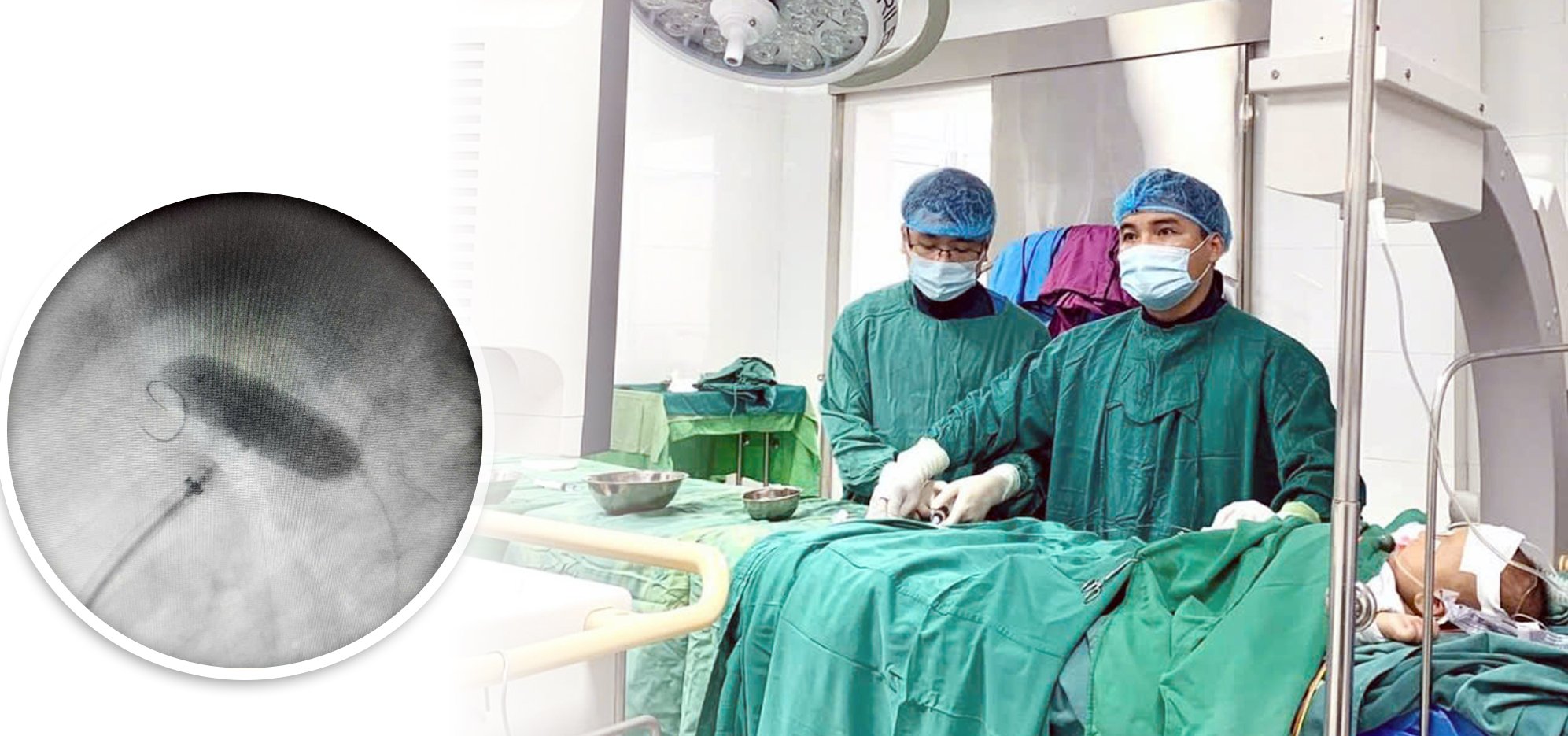Nghe An Obstetrics and Pediatrics Hospital said that doctors from the Cardiology Department have just successfully treated a case of congenital heart disease, coarctation of the aorta combined with patent ductus arteriosus using percutaneous intervention.

A 3-year-old patient with aortic coarctation was treated with percutaneous intervention.
Previously, patient KPT (37 months old, residing in Ky Son district, Nghe An) was diagnosed with congenital heart disease more than a year ago, but due to difficult family circumstances, they could not afford to take the child for treatment. During this time, the child ate poorly, was tired, played less, and coughed a lot, so the family took the child to the Nghe An Obstetrics and Pediatrics Hospital for examination.
Here, the child was examined by doctors and ordered an echocardiogram. The ultrasound results showed that the child had congenital heart disease, aortic stenosis combined with patent ductus arteriosus, increased pulmonary artery pressure, causing heart failure. The child was quickly hospitalized for the necessary tests and investigations for treatment.
Because the patient was young, the doctors consulted and chose the percutaneous intervention method. This is a minimally invasive method, after the intervention the child recovers quickly, has little pain and does not require resuscitation like open heart surgery.
Master, Doctor Hoang Van Toan - Deputy Head of the Cardiology Department and the department's team performed a percutaneous intervention to dilate the aortic coarctation and seal the ductus arteriosus. The intervention went smoothly in 60 minutes. One day after the intervention, the ductus arteriosus was sealed with a parachute and the aortic coarctation after dilation was still very mildly narrowed, without affecting the child's hemodynamics. The child recovered well and was discharged from the hospital.
BSCKII. Nguyen Van Nam - Head of Cardiology Department, Nghe An Obstetrics and Pediatrics Hospital said that coarctation of the aorta is a relatively common congenital heart disease, accounting for 6-8% of congenital heart diseases, with a male/female ratio of at least 1.5 - 2 times.
Coarctation of the aorta may occur alone or in association with other congenital heart abnormalities, the most common being a bicuspid aortic valve (20-40% of patients). Other associated lesions include ventricular septal defect, patent ductus arteriosus, aortic stenosis, and mitral valve abnormalities. The severity of coarctation of the aorta varies and is most commonly found in the proximal thoracic aorta, immediately behind the origin of the left subclavian artery, at the ductus arteriosus. The stenosis may be anterior to the ductus arteriosus or posterior to the ductus arteriosus, and approximately 20% of infants admitted to the hospital for heart failure have coarctation of the aorta.
If not treated promptly, aortic stenosis will restrict blood flow through the narrowed area, leading to ischemia in the lower body; in the long term, it will lead to high blood pressure in the upper body, cerebral aneurysm and rupture, heart failure, increased pulmonary artery pressure, etc.
Dr. Nam noted that children with aortic stenosis will show symptoms very soon after birth, including: cyanosis, poor feeding, refusal to feed, excessive sweating, difficulty breathing, rapid breathing, and slow growth. If parents see their children with these symptoms, they should take them to a medical facility for timely examination and treatment.
Source: https://giadinh.suckhoedoisong.vn/can-thiep-qua-da-cuu-benh-nhi-3-tuoi-bi-hep-eo-dong-mach-chu-172250318205215702.htm


![[Photo] General Secretary To Lam meets voters in Hanoi city](https://vphoto.vietnam.vn/thumb/1200x675/vietnam/resource/IMAGE/2025/9/23/d3d496df306d42528b1efa01c19b9c1f)
![[Photo] Editor-in-Chief of Nhan Dan Newspaper Le Quoc Minh received the working delegation of Pasaxon Newspaper](https://vphoto.vietnam.vn/thumb/1200x675/vietnam/resource/IMAGE/2025/9/23/da79369d8d2849318c3fe8e792f4ce16)
![[Photo] Prime Minister Pham Minh Chinh chairs the 14th meeting of the Steering Committee on IUU](https://vphoto.vietnam.vn/thumb/1200x675/vietnam/resource/IMAGE/2025/9/23/a5244e94b6dd49b3b52bbb92201c6986)


![[Photo] The 1st Congress of Party Delegates of Central Party Agencies, term 2025-2030, held a preparatory session.](https://vphoto.vietnam.vn/thumb/1200x675/vietnam/resource/IMAGE/2025/9/23/e3a8d2fea79943178d836016d81b4981)




















































































Comment (0)